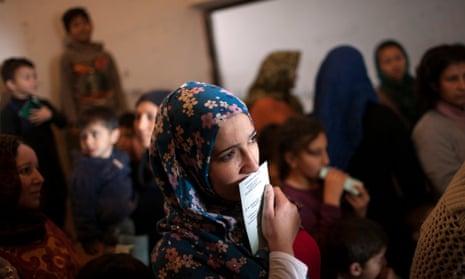The number of people applying for asylum in wealthy countries soared to a 22-year high in 2014, as hundreds of thousands fled conflicts in Syria and Iraq, the UN’s High Commissioner for Refugees (UNHCR) has said.
Humanitarian crises and the threat of human rights violations were also behind the rise last year, when more than 850,000 people applied for asylum in 44 wealthy countries in Asia, Europe and North America, according to the UNHCR.
More asylum applications were filed in 2014 than in any year since 1992, when fighting in Bosnia and Herzegovina displaced 900,000 people.
Last year, Germany received the most asylum seekers of any wealthy country, with more than 173,000 asylum applications, including nearly 40,000 from Syrians; the US accepted 121,000 applications, while Turkey took 88,000. European law requires people to be physically present in the country they are petitioning for asylum.
Syrians put forward 150,000 asylum applications in 2014, or one in five of all submitted. They were followed by Iraqis, who filed nearly 70,000 requests, and Afghans, with 60,000 applications, the UNHCR said. Overall, this marks a 45% rise from 2013.
Germany accounted for 30% of all asylum claims made in the EU, while Sweden received 13% of the applications, the UNHCR said.
The report did not include asylum applications to Russia, but estimated that it had received 265,000 asylum applications from Ukrainians last year, who fled fighting in the country’s east.
António Guterres, the UN’s high commissioner for refugees, said: “Today, the surge in armed conflicts around the world presents us with similar challenges, in particular the dramatic situation in Syria. Our response has to be just as generous now as it was then – providing access to asylum, resettlement opportunities and other forms of protection for the people fleeing these terrible conflicts.”
Sweden hosts the most asylum seekers as a percentage of its population, averaging 24.4 refugees for every 1,000 Swedish nationals, according to the UNHCR.
This article includes content hosted on d26adhsj11a4c2.cloudfront.net. We ask for your permission before anything is loaded, as the provider may be using cookies and other technologies. To view this content, click 'Allow and continue'.
Asylum seekers are defined by the UNHCR as people whose claims of persecution have not yet been substantiated.
According to the 1951 refugee convention, which was amended in 1967, “refugees deserve, as a minimum, the same standards of treatment enjoyed by other foreign nationals in a given country and, in many cases, the same treatment as nationals”.

Comments (…)
Sign in or create your Guardian account to join the discussion